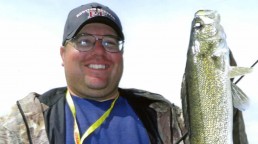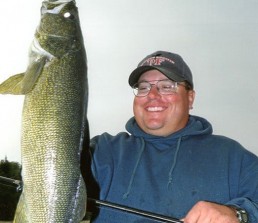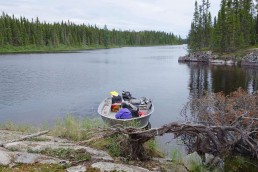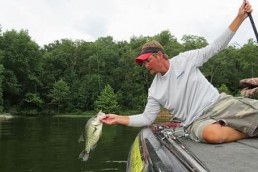Lac Seul’s Summer ‘Eyes: Plan now for Going Up North for Walleye Hot Spot
In the summertime, the fishin’s easy. Walleyes earlier in the year in the Midwest were good, but up in northwest Ontario in Lac Seul, they really had it goin’ on. High on the list of the best destinations in Canada for this species, Lac Seul is a producer of both numbers and big fish, until freeze-up. When considering your plans for trips months ahead, anglers must realize this is “big water.” Lac Seul is 168 miles long, and is a dammed up portion of the English River system. From an accessibility standpoint, it’s impacted in an equally big way by the weather.
Though never absolute in the North Country, the year’s calmest, most stable weather annually occurs during midsummer. While an angler can always find protected water, if he needs to, to get the most out of Lac Seul the angler must be willing and able to travel, whether in one of the substantial crafts all the lake’s resorts has to offer, or in his own rig, which is up to 20 miles or more one way on daily excursions. To do that safely and comfortably requires good weather.
Once getting to where the “big bite” is, the angling pretty basic. The go-to presentation on Lac Seul is the ever-reliable jig and minnow. Whether pitched, wind-drifted or slowly backtrolled, this simple setup will produce on points, shoreline breaks, mid-lake reefs and deep weedline edges where fish are concentrated.
When they’re not though, a more proactive trolling-oriented approach is called for. And that’s when the spinner rigs shine. Spinners and minners, or spinners and ‘crawlers or leeches dragged at an appropriately slow pace behind a bottom bouncer or inline sinker, provides the ability to cover the water needed to contact ‘eyes relating to roving schools of bait.
Crankbaits have their place in a Lac Seul angler’s arsenal as well. And it’s important to realize that this lake is a fertile body of water with an excellent forage base. Those baitfish are stocking the lake’s “pantries” to the max by midseason. While the walleyes are taking full advantage of this bonanza, they can get picky. It’s then that a hard-working crankbait can trigger strikes from the fat, happy, complacent fish.
The real good news for those choosing Lac Seul is that the great majority of the fish are rarely found deeper than 20 feet with the best action always in depths ranging from 6 feet—in the case of a wind-and-wave-pounded shoreline—to 15 feet or so. Lac Seul’s waters are stained in nature, so given their generally dark color in combination with the wind factor on sand- and clay-banked shorelines, its walleyes are totally comfortable in the shallower waters of the first and second shoreline breaks.
The biggest factor contributing to planning a guided or non-guided trip now for summertime Lac Seul is the sheer number of fish that will be available. Thanks to strictly enforced slot limits (fish 18 to 21 inches must go back with one over allowed to accommodate a “possible” trophy) and its no-cull regulation (if keeping a fish you have to kill it, and use of livewells prohibited), the lake’s walleye fishing only gets better every year in terms of both quantity and quality. In fact, the number of heavyweight, 23- to 28-inch fish you’ll catch in a good week’s angling would be tough to match anywhere else in Canada or in the Midwest in the summer for that matter.
So, if it sounds like I’m a fan of Lac Seul’s summertime walleyes, make no doubt about it—I’m planning to be there next summer and you should plan now to give it a try. It’s likely you’ll find yourself in the same boat next year, or at least one close by.
MWO
SHARE THIS POST
You may also like...
Did you enjoy this post?
You can be among the first to get the latest info on where to go, what to use and how to use it!
Jack Hirt
Jack Hirt describes himself as, “Your typically avid, season-by-season, weekend warrior-type sportsman.” In addition to MidWest Outdoors, he has written two books (‘SNo Geese Like Snow Geese, and So You Wanna Puppy?), and contributed features to more than 20 national and regional publications since 1976.



